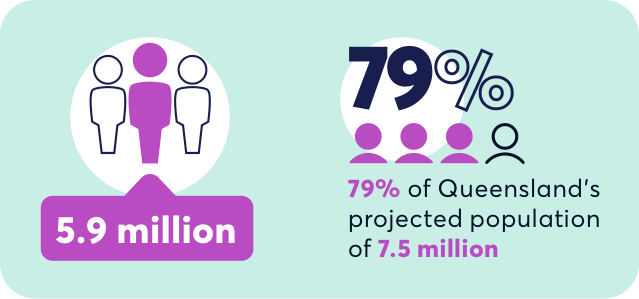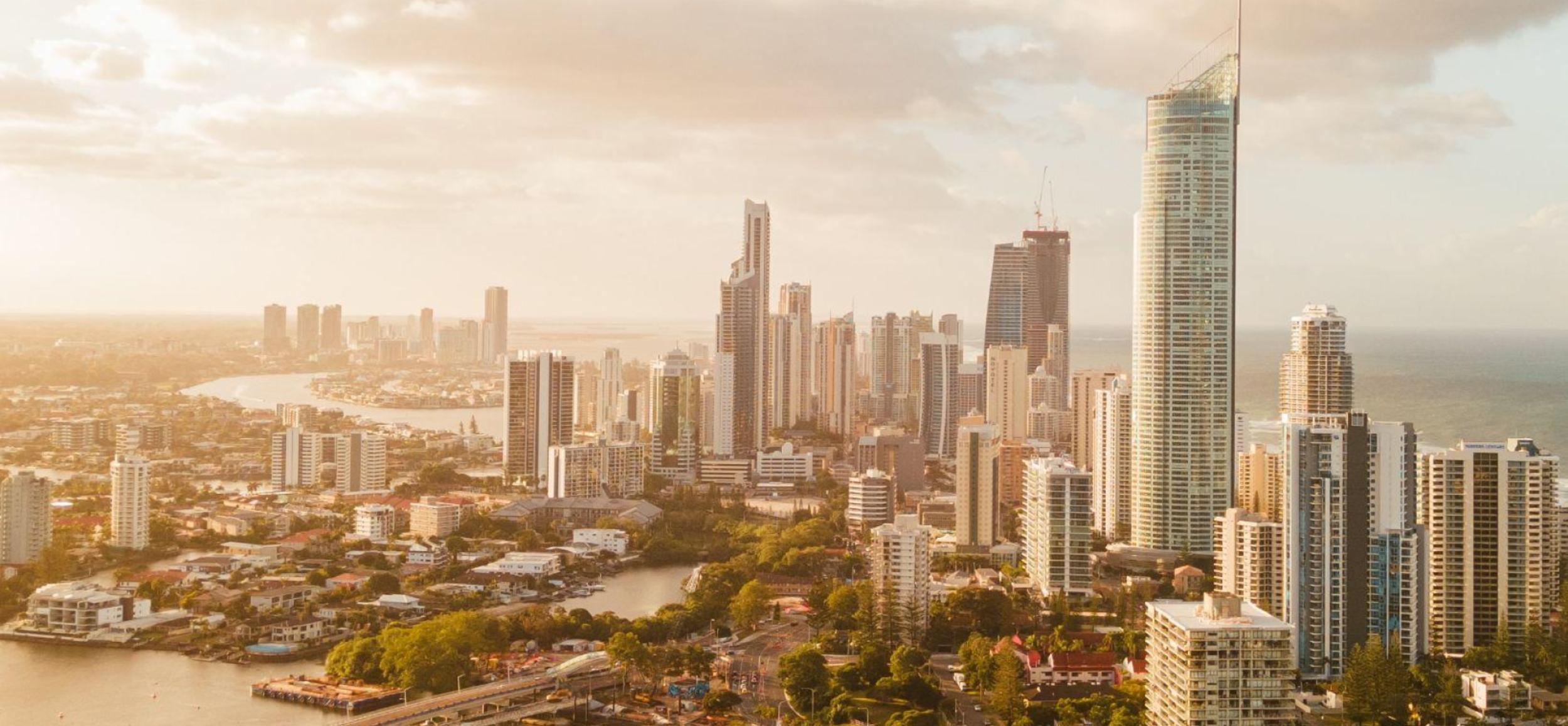Demographics
The future of South East Queensland

South East Queensland in 2050
In a world where change is the new normal, it‘s critical to look forward and consider what we can do today to help future generations thrive. South East Queensland (SEQ) is a key region within Australia, supporting the economy and contributing to a thriving nation. With the Brisbane 2032 Olympics and Paralympics ahead and the development and growth that will bring, understanding the landscape of SEQ towards 2050 is important.
A growth of more than two million in the next 30 years
Stretching from the Gold Coast in the south through to Brisbane, the Sunshine Coast and Noosa in the north and inland to Toowoomba, South East Queensland (SEO) is the state‘s population centre and will continue to be a nationally significant growth region towards 2050.

SEQ’s population is projected to increase to 5.9 million by 2050, a growth of more than two million people over the next 30 years. By 2050, almost four in five Queensland residents (79%) will live in the region. The emerging generation, Generation Alpha (who will be aged 26-40 in 2050) is set to be the largest generation in the region with 1.2 million, followed by Generation Z (aged 41-55 in 2050) with 1.1 million.
The missing middle
Housing across SEQ is also projected to grow and change with the population. This growth will primarily take place in semi-detached housing.
The low-density housing composition of SEQ will shift to accommodate what is currently called the missing middle. Semi-detached medium density housing is projected to account for 18% of households in SEQ by 2050, an increase from the current 12%.
High-density flats and apartments will continue to comprise 16% of housing. Detached houses will make up two-thirds of SEQ‘s dwellings (66%), a decline from 71% at present.
Changing employment landscape
COVID-19 has been a catalyst for great change in many areas of life, including the workplace, and many of these changes are likely to continue as we head towards 2050. With increasing expectations around flexibility and remote work, the employment landscape will continue to shift and meet the ever-changing demands of both the workforce and societal changes more broadly.
By 2050, there will be new jobs, industries and opportunities for SEQ’s population. From new transport roles such as drone pilots and driverless train operators to other career paths supporting a 2050 community such as urban farmers or AI specialists, future jobs will abound in SEQ. With space travel becoming more frequently explored, there is even the potential for roles in space tourism and the aerospace sector.
Getting around SEQ
While many of the current transport options will likely still be around in 2050, there will be new needs and improvements made to existing systems, as well as pathways for whole new systems. Emerging infrastructure will incorporate new modes and options for delivering goods, such as smart delivery or drone technologies. This future will require accessibility to meet the needs of residents and offer faster journeys to accommodate the growing population.
Transport options of the future could include:
- Aerial ridesharing
- High speed rail
- Autonomous vehicles
- Hyperloop
- Trackless trams
- Delivery drones
- E-mobility devices
- On-demand shuttles.
![]()
Engaging with transport in 2050
To illustrate how transport could change by 2050, here are some fictional personas we created to show how people in 2050 will make the most of the more connected and simple transport options in the SEQ of the future.
Learning Lucas
At the age of 16, Lucas is part of Generation Beta and is a high school student, making up one of the 873,000 school students in South East Queensland (SEQ) in 2050. Flexible work trends and side hustles are being picked up by savvy high school students looking for a way to develop skills and earn an income. Gone are the days of the paper run. As a side hustle, Lucas creates websites for businesses large and small.
Leading a busy lifestyle of full-time study and freelance work, it‘s important that Lucas has cost- effective and flexible transport options to get him to school or to spend time with friends. To do this, Lucas relies on transport options that are convenient and take him easily around his 15- minute city. Mass transit systems are well-used, as are e-mobility devices to connect Lucas to more places quickly and efficiently. Lucas looks forward to holidays with his family, where with new hyperloop technology, his family can get from Brisbane to Sydney in less than 40 minutes.
Connected Charlie
Charlie lives with a disability and has needs for help or assistance with one of the three core activity areas of self-care, mobility and communication. Charlie is one of 303,000 individuals living in SEQ in 2050 who need assistance with core activities. Smaller properties are easier to navigate for those living with mobility issues, which drives Charlie to live in a semi-detached town house.
Living with a disability, it’s important Charlie has equitable access to transport. Charlie requires accessible transport options to help him visit family in Toowoomba from his inner-city neighbourhood. He is well-serviced by the local public transport network with its easy and accessible connections within his neighbourhood, including on-demand shuttle buses and track less trams. Charlie also hires cars and modified self- driving vehicles when needing to travel that little bit further.
Professional Poppy
Poppy is part of Generation Alpha, born in 2015. She is a mum with two children who works a hybrid model of in-office and from home. Her office is in Brisbane and her home on the Sunshine Coast. She is a knowledge worker and enjoys the flexibility of working in an office while still getting to live and work by the beach.
Flexibility in her role is key as she has children to ferry around to after school activities. Days she is in the office, fast transport in her autonomous vehicle is essential to make the hybrid lifestyle work for her. When seeking a city-centre getaway, she uses high speed rail to get to Brisbane to make weekend trips easy and accessible. On top of this, developments in aerial ridesharing means flying between key locations in SEQ is convenient and fast for Poppy.
Planning for the future
Demographic growth and social changes towards 2050 will require reimagining and planning now, for the future of SEQ. This includes understanding the needs for housing, transport and work.
For more insights on the future of South East Queensland, download the full infographic.





